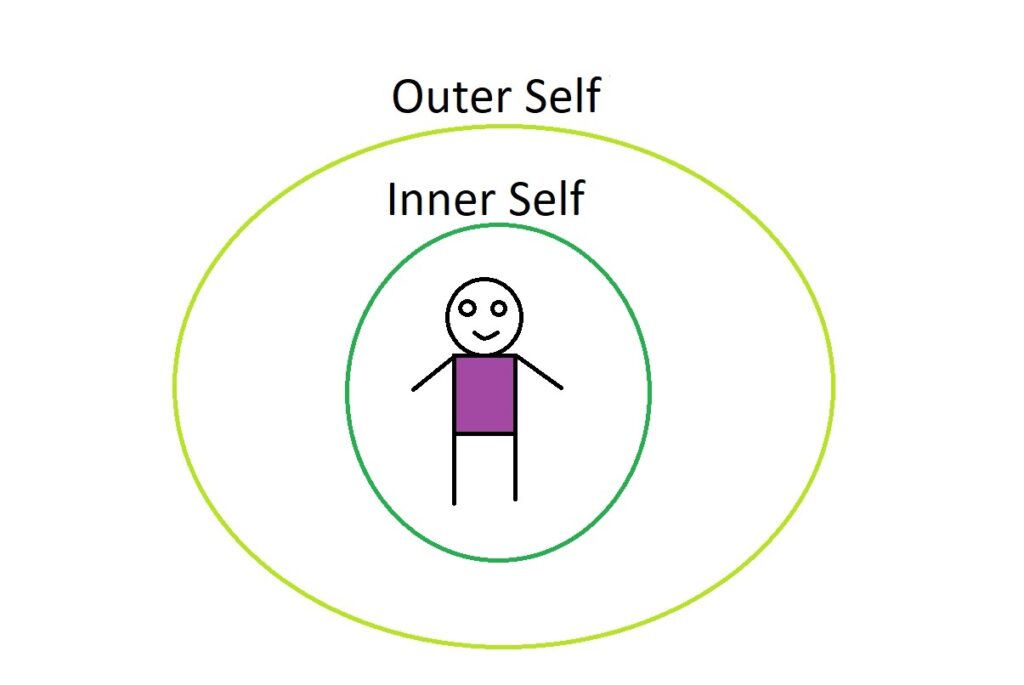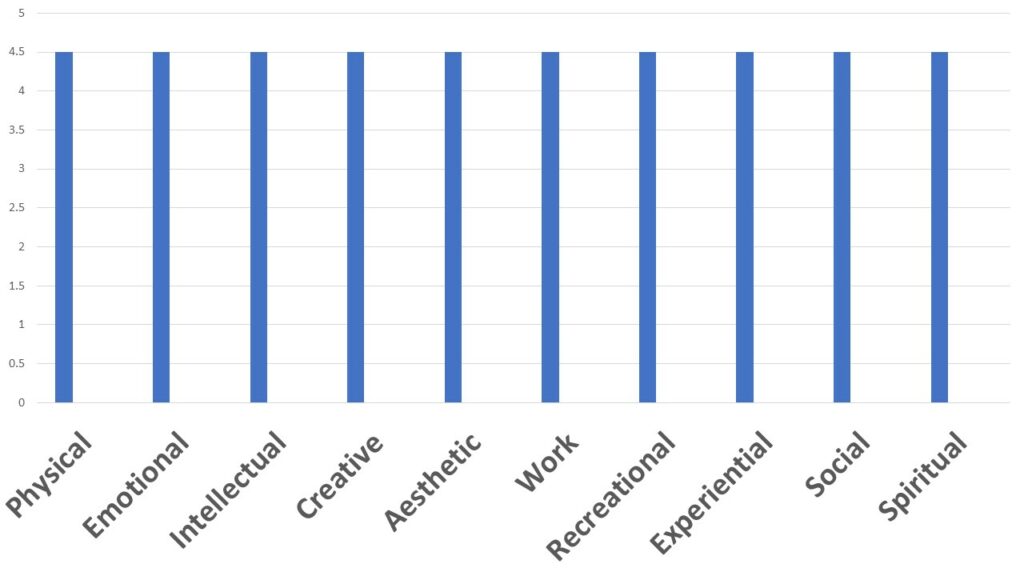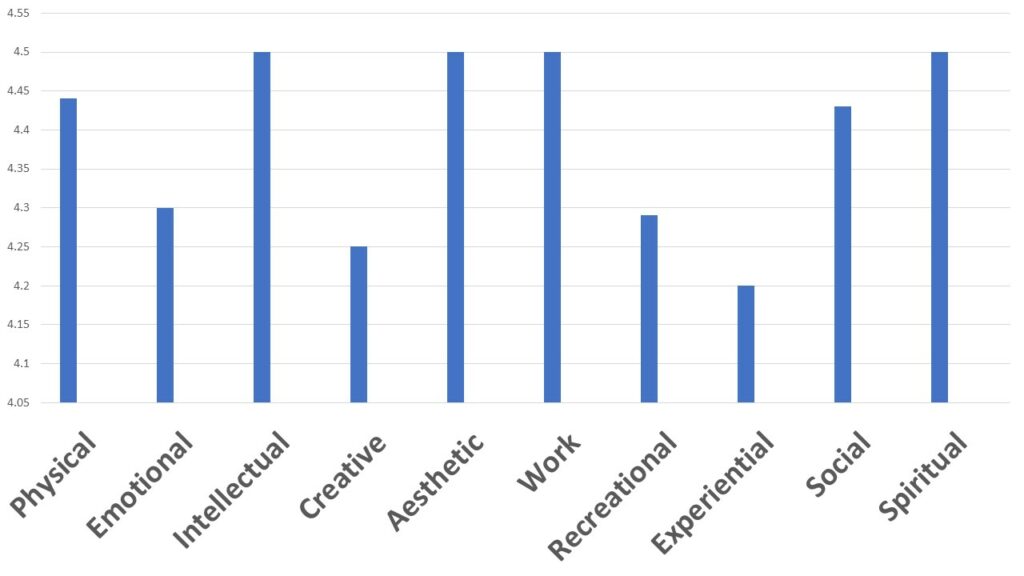“I miss you, not mentally but physically.”
When my girlfriend said that to me recently, it left me scratching my head. I mean, I understood what she meant, but I’d never thought about ‘missing’ that way. People usually only say, “I miss you”.

The fact that she specified a modality of ‘missing’ had me thinking.
I was like:
“Okay, so there are ways in which we miss someone- physical and mental. What else?”
Turns out, there are several ways in which we can miss our loved ones, and these correspond to the different types of intimacy found in relationships.
Intimacy defined
Intimacy is derived from Latin ‘intimus’, meaning ‘innermost’. An intimate relationship is one where two or more people share their innermost selves- their deepest personalities- with each other.
Author Karen Prager defines an intimate relationship as:
“The presence of ongoing, frequently occurring intimate interactions among partners.”
– Karen Prager, The Psychology of Intimacy
Intimacy can be experienced in any kind of relationship including:
- Romantic relationship
- Parent-child relationship
- Friendship
- Siblinghood
- Professional relationship
- Community-level relationship
As social species, we need intimate relationships. We want to express who we are at a deep level to others. And we want others to accept us for who we really are. Intimate relationships are essential to physical and mental well-being.1
We all have this inner and outer self. The outer or superficial self is used for superficial interactions and relationships. The inner or authentic self is used for intimate relationships.
When you interact with a cashier at a grocery store, for example, you don’t share your personal life with them. You may quickly ask, “How are you doing today?” and then get down to business. You’re interacting with your outer self.
If you were to talk about more personal stuff, you’d be moving from interacting with the outer self to interacting with the inner self. If they reciprocate, they might also shift to inner self mode.

Essentials of intimacy
Intimacy is nothing more than feeling close to someone. This feeling of closeness is fostered by sharing. Other than sharing, key factors that promote intimacy are:
1. Honesty
When you’re authentic, people pick up on it and appreciate it. Honesty is critical for presenting your inner self to others. When you do that, people can more easily connect with you.
2. Acceptance
Intimacy revolves around acceptance. You share your authentic self with others, and they share theirs. Thus, there’s a mutual acceptance of authentic selves.
3. Trust
Sharing our authentic selves with others requires the highest level of trust. Trust is built when people keep their word and deliver on their promises.
4. Safety
Safety in the sense that you won’t be criticized or judged for who you are. Also crucial for intimacy.
You can remember the above factors via the acronym ‘HATS’. When people greeted (or tried to get intimate) in the old days, they saluted by removing their HATS.
Intimacy usually takes time to develop. After all, people don’t readily put their guards down. Intimacy opens one up for lies, rejection, deception, and danger (opposite of HATS). So, they have good reason to be careful who they get intimate with.
However, intimacy is not so much a function of time than it is a function of sharing. Long-term relationships do not necessarily guarantee a higher level of intimacy.2
Types of intimacy in a relationship
Now that we have a good understanding of intimacy, let’s go over its types:
1. Physical
Physical intimacy is reached via all kinds of physical contact, such as shaking or holding hands, hugging, cuddling, kissing, and copulation. When the ‘touch barrier’ between two people is broken, they’re closer to each other than before.
2. Emotional
It involves sharing our deepest feelings and emotions with others. Emotional intimacy is about expressing and sharing both positive and negative feelings. If you only express positive feelings to your partner, your relationship’s bound to lack emotional intimacy.
3. Intellectual
Are you and your loved one comfortable sharing your thoughts, ideas, and opinions with each other? If yes, then your relationship has intellectual intimacy. This type of intimacy isn’t about agreeing with each other all the time. It’s about free communication of ideas regardless of agreement or disagreement.
4. Creative
As mentioned earlier, intimacy is fostered by authentic expression of self. Creativity and art are some of the most potent forms of self-expression. Couples who have creative intimacy share their artistic talents and passions.
5. Aesthetic
Aesthetic intimacy is about sharing wonder and awe for beauty. Watching a beautiful painting, movie or a natural scene are examples of experiences that boost aesthetic intimacy.
6. Work
Work-related intimacy is usually developed in co-workers when they share tasks. It’s that feeling of camaraderie that you get by working together on the same tasks. This type of intimacy can also be cultivated in romantic relationships when couples do chores and other tasks together.
7. Recreational
It’s doing fun and pleasurable activities together. All work and no play make not only Jack but a relationship dull too.
8. Experiential
Experiential intimacy is developed by embarking on new experiences together. When we share new experiences with someone, we make memories with them which leads to intimacy.
9. Social
Social intimacy means having the same social circle. When you have common friends, you spend more of your social time with each other.
10. Spiritual
It’s about having the same spiritual beliefs. If two people agree on the meaning and purpose of life, it’s a vast intimacy boost.
Perfect and imperfect intimacy
A perfect relationship with perfect intimacy would be the one where all the intimacy types are at their peak:

Of course, such relationships are rare, if not impossible. A relationship doesn’t need all intimacy types at the highest levels for it to work. It should have the most important types at decent levels, though.
What types are most important will depend on the relationship partners. If the levels of intimacy are low in most or critical intimacy areas, the relationship partners drift apart.

When you look at your relationship this way, you can quickly determine what areas you need to work on. If your relationship lacks intimacy in one crucial area, that area has the highest priority.
Back to square one
It had been a while since I’d seen my girlfriend. Our intellectual and emotional intimacy levels were pretty high, but physical intimacy had dropped. Hence the expression: “I miss you, not mentally but physically.”
It’s all math, guys. It always is. Do the math and figure out what intimacy types you might want to improve.
References
- Reis, H. T., & Franks, P. (1994). The role of intimacy and social support in health outcomes: Two processes or one?. Personal Relationships, 1(2), 185-197.
- Wong, H. (1981). Typologies of intimacy. Psychology of women quarterly, 5(3), 435-443.
